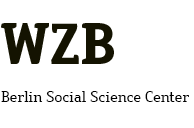EVOLUÇÃO MOTORA NA PARALISIA BRAQUIAL PERINATAL: UM RELATO DE CASO
Resumo
A Paralisia Braquial Perinatal, ou PBP, consiste em uma lesão do plexo braquial durante o trabalho de parto, sendo normal ou cesárea. Durante o trabalho de parto, ocorre uma tração longitudinal do ombro do RN ou flexão cervical com o ombro fixo. Isso pode lesar o plexo braquial, porque vai separar as raízes dos nervos espinhais comprometendo a integridade dos nervos ou dividindo os troncos nervosos em um ou mais níveis. Objetivo: Observar e relatar a fisioterapia na evolução durante 11 meses de atendimento de paciente pós Paralisia Braquial Perinatal, acompanhado no Ambulatório de Fisioterapia Pediátrica da Fundação Lusíada – Santos/SP. Metodologia: Trata-se de relato de caso realizado na Clínica de Fisioterapia da Lusíada, na cidade de Santos-SP. Foi realizado analise do desenvolvimento e da motricidade e força através das escalas: Active Movement Scale, Children and Infant Postoporative Pain Scale, Escala Sensorial Narakas, Medical Research Grading System e Brachial Flexor Outcome Measure, pré e pós 11 meses de intervenção. Resultados: Nas primeiras avaliações, o paciente teve ganho de ADM, ganho de força muscular do MSD, ganho da linha média do indivíduo, melhora do controle de tronco, integração dos reflexos, adquiriu rolar 180º sem apoio, sentar com e sem apoio, em pé com apoio e em sem apoio, marcha com apoio e sem apoio. Os últimos ganhos do paciente foram extensão de punho, ganho de motricidade fina e ganho de ADM. Conclusão: Concluímos que a fisioterapia precoce foi de extrema importância para a evolução e resultados positivos do paciente e diminuir o comprometimento da funcionalidade do membro acometido.
MOTOR EVOLUTION IN PERINATAL BRACHIAL PARALYSIS: A CASE REPORT
Perinatal Brachial Palsy, or PBP, consists of a lesion of the brachial plexus during labor, being normal or cesarean section. During labor, a longitudinal traction of the shoulder of the NB occurs or cervical flexion with the shoulder fixed. This can damage the brachial plexus because it will separate the roots of the spinal nerves, compromising the integrity of the nerves, or dividing the nerve trunks into one or more levels. Objective: To observe and report the physiotherapy evolution during 11 months of post Brachial Perinatal Paralysis patient care, accompanied at the Pediatric Physiotherapy Clinic of Fundação Lusíada - Santos/SP. Methodology: This is a case report carried out at the Physiotherapy Clinic of Lusíada, in the city of Santos-SP. It was performed an analysis of the development and the motricity and strength through the scales: Active Movement Scale, Children and Infant Postoporative Pain Scale, Narakas Sensory Scale, Medical Research Grading System and Brachial Flexor Outcome Measure, pre and post 11 months of intervention. Results: In the first evaluations, the patient had ROM gain, MSD muscle strength gain, midline gain of the individual, improved trunk control, reflex integration, acquired 180º rolling without support, sitting with and without support, standing with support and walking with support and without support. The patient's last gains were wrist extension, fine motor gain and WMD gain. Conclusion: We concluded that early physiotherapy was extremely important for the patient's evolution and positive results and to diminish the impairment of the affected limb's functionality.
Palavras-chave
Texto completo:
PDFApontamentos
- Não há apontamentos.
Direitos autorais 2021 Revista UNILUS Ensino e Pesquisa - RUEP
ISSN (impresso): 1807-8850
ISSN (eletrônico): 2318-2083
Periodicidade: Trimestral
Primeiro trimestre, jan./mar., submissões até 31 de março, publicação da edição até 15 de agosto.
Segundo trimestre, abr./jun., submissões até 30 de junho, publicação da edição até 15 de outubro.
Terceiro trimestre, jul./set., submissões até 30 de setembro, publicação da edição até 15 de janeiro.
Quarto trimestre, out./dez., submissões até 31 de dezembro, publicação da edição até 15 de abril.

Este obra está licenciado com uma Licença Creative Commons Atribuição-NãoComercial-SemDerivações 4.0 Internacional.
Indexadores
Estatística de Acesso à RUEP
Monitorado desde 01 de dezembro de 2025.
Monitorado desde 22 de novembro de 2016.













